Ultra-Indie Spotlight Sunday: Vital Signs And The Escort Mission Enigma

It’s a question that’s eluded developers since time immortal. How do we make an escort mission that isn’t frustrating and not fun? The obvious answer in recent years has been to simply not have them included in your game, which truth be told, is a pretty good solution. But to remove an entire mechanic from a game due to difficulty is a quitter mentality. So we’re going to explore what can make or break an escort mission, and Vital Signs is the perfect example of how one can be enjoyable.

Conceptual Meta-Wank
To do this we must first clarify what doesn’t work. An escort mission is found in games of many genres, and as such is extremely varied. It’s a simple premise; guide someone and something somewhere without it being destroyed. And yet, just about all of them fall to the same frustrating mechanics. There’s a reason it’s such a notoriously bad type of mission, and I think I’ve narrowed it down to three main problems.
The first is that an escort mission requires you to to focus on who you’re escorting, as well as the mission. Normal gameplay would have you focusing on any number of mechanics, and get you used to the flow of the game under those circumstances. But to throw in an additional element disrupts that mental flow, and who enjoys being distracted while gaming? This destruction is amplified by the fact that all too often, you’re being distracted by a game’s AI. If you’re escorting a person and have no control whether or not they run into a hail of bullets or a monster’s jaws, that responsibility falls on them being dumb, not the player’s lack of skill. And finally, oftentimes whatever it is you’re protecting is some meaningless plot device or tangentially connected person. Vital Signs has overcome all three of these issues.
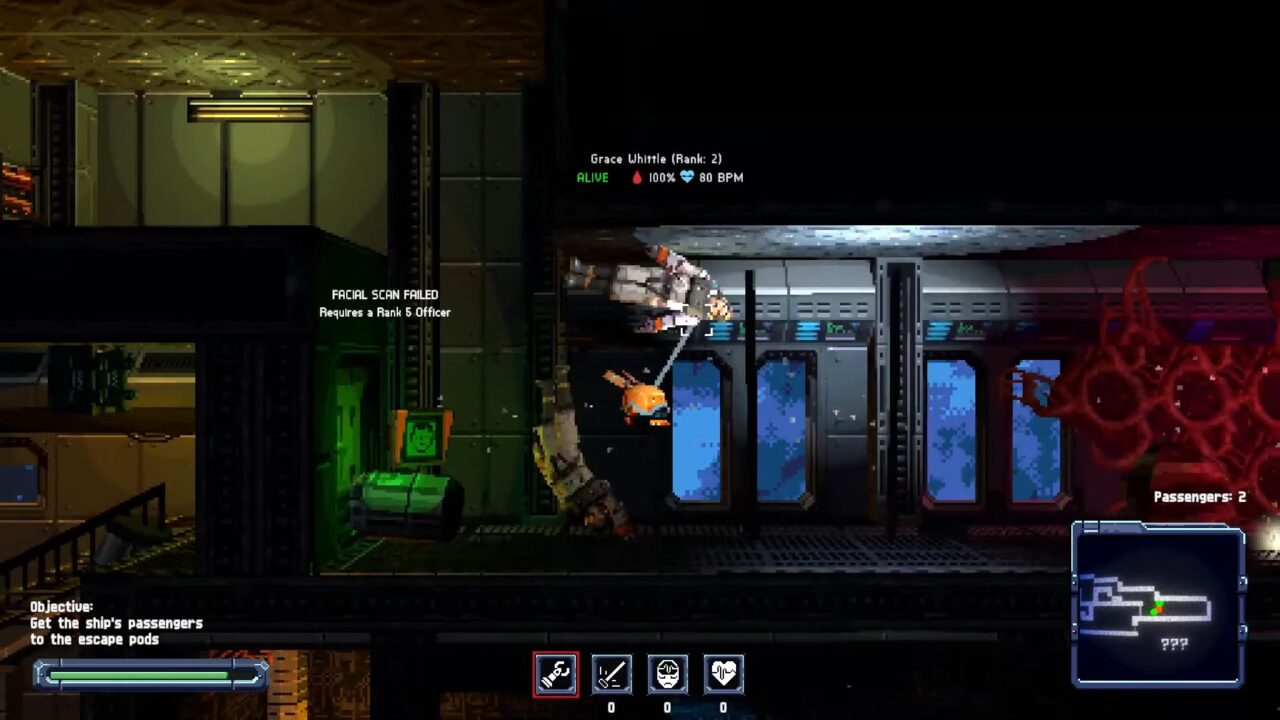
Non-Wanky Game Recap:
Vital Signs takes place in a spaceship, don’t know the details of it but it doesn’t matter. You play as the sole medical drone on board, activated when an explosion rocks the entire vessel. But this is no ordinary hull breach; now on board is some kind of mysterious organism, spreading fast and not too kind. In the demo, there are two humans on board, both still deep in stasis and helpless to move. Your goal, as a medbot, is to preserve all human life by getting them safely to the escape pods.
This is not exactly an easy feat. While the medbot has complete directional control, Vital Signs takes place entirely within zero G, and your mission involves taking ragdolling bodies through a dangerous labyrinth full of hazards, aliens, and most devastating of all, floating boxes that get in the way. The medbot is equipped with the world’s shortest range tractor beam, which you can use to grab objects and toss them around. This is the tool that you use to drag crewmembers to safety. It’s also the tool you use to kill aliens by throwing trash at them.
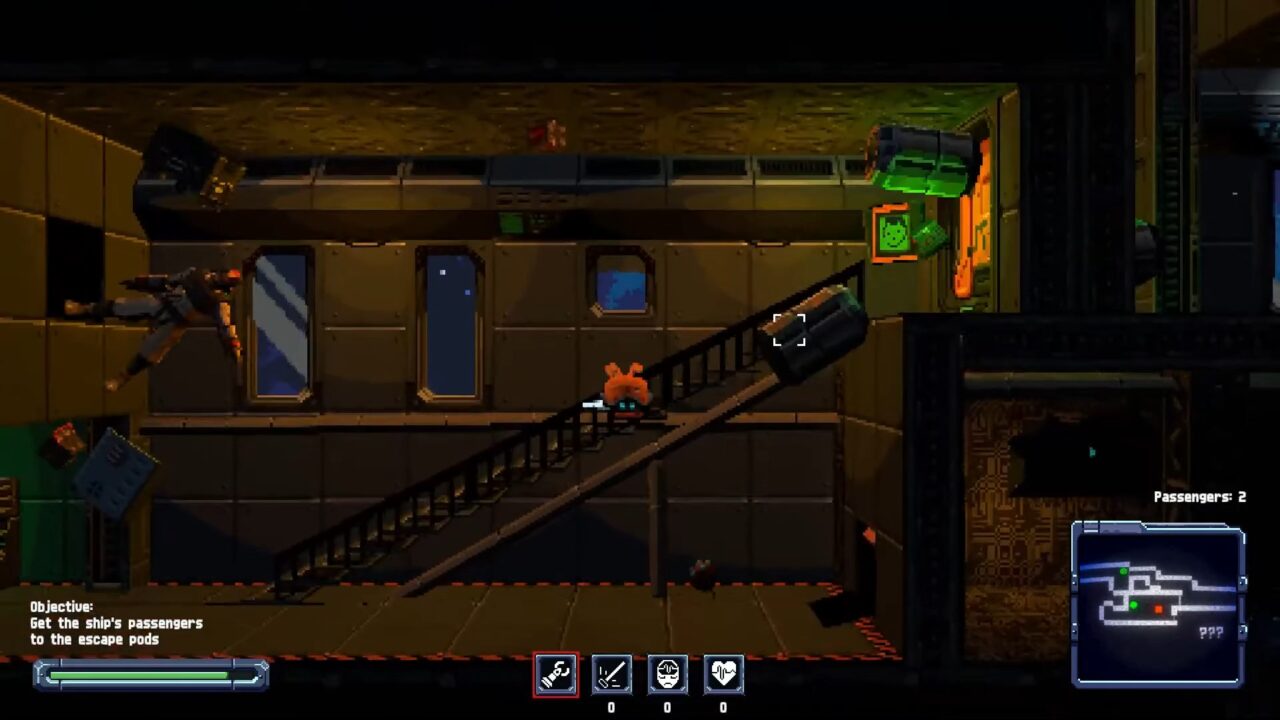
What Works:
What makes Vital Signs’ escort mission so great as opposed to, say, survivors in Dead Rising, is the relationship they hold to the player character. In Dead RIsing 2 alone we see the two kinds at play: that between Chuck Greene and his daughter Katey, and between Chuck Greene and whatever dumb asshole you happen to find in a sporting goods store. Right away, there’s an obvious difference. Katey is not only an important character, she is THE important character. She is the driving reason that Chuck does all that he does. That mentality is not lost upon the player.
So it is in Vital Signs as well. The first thing the robot does when out of the box is look at the human floating helplessly in zero G and say “humans life detected. Humans are good. Good things should be kept safe.” Whether or not you aren’t cynical enough to agree is besides the point. The character you are living through vicariously, the EMT bot, says to you right away “my purpose in this existence is to protect that guy.” And look at that cute little android. How could you say no to a face like that?
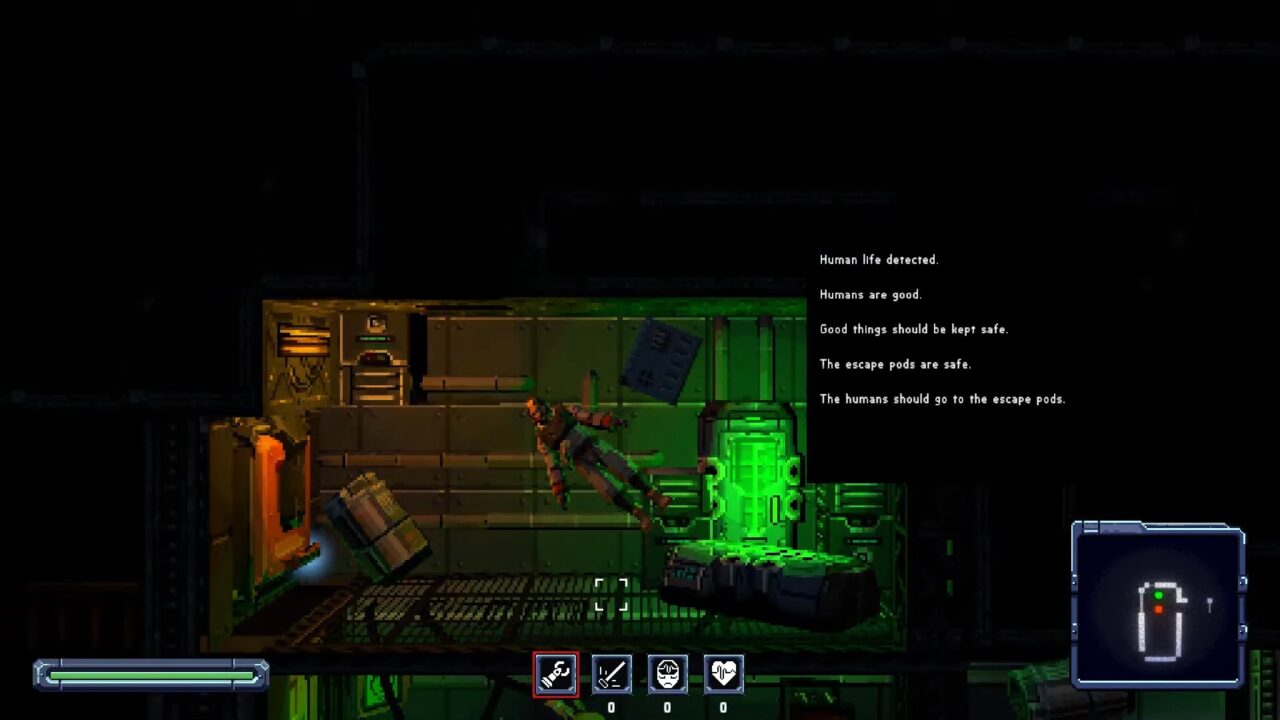
There is, of course, more to it than that. For a video game, narrative cannot exist in a vacuum. It’s got to be fun to play too. The president’s daughter in Resident Evil 4 is more than enough motivation for Leon, but that doesn’t mean protecting her oafish ass is as enjoyable as it could be. Elizabeth from Bioshock Infinite is acceptable because she’s never actually in danger during combat sequences, and even helps out the player in a pinch. What sets Vital Signs apart from these two examples is that protecting the people does not get in the way of the gameplay, because it is the gameplay. Every part of the game revolves around keeping the people safe, and as a result, it doesn’t feel like babysitting.
The gameplay in Vital Signs hits that same ethos, especially since the people you’re escorting are about as helpless as it gets. I mean, they’re asleep. This actually works towards your benefit, because you know for a fact they won’t be running off into a monster’s hidey hole while you’re clearing the path forward. And in zero gravity, it’s all the more simple to chuck them down a hallway while you fight off some aliens. To balance out the ability to stuff their comatose body into a vent for later, Vital Signs included security doors that can only be opened by someone with enough clearance, so you’re required to drag their body around the ship.
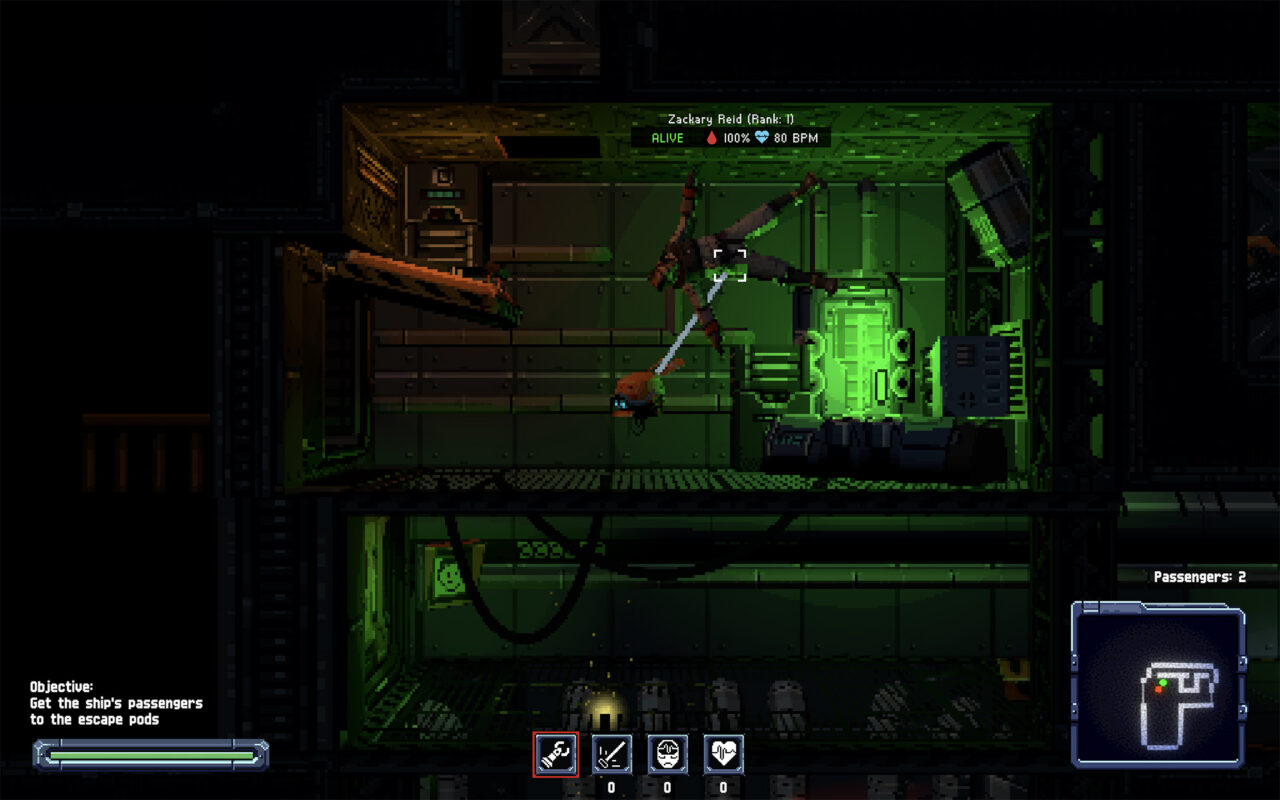
What Doesn’t Work:
Vital Signs is a great start, but it’s still very much an incomplete game. Many of the mechanics are not even included in the demo build. We see four logos at the bottom, only two come into play. The first is the tractor beam, which has been described above. The other one that is included is a cauterizing laser, which is a super cool mechanic that allows you to, well, cauterize. Should your human get their arm torn off by an alien, you’ve got precious little time to sew that backup. These were intense moments that heightened the experience of the game. However, there were almost no circumstances where it actually happened. It was way too easy to get them to safety in mostly one piece.
How To Fix It:
Keeping the humans far away from the action was incredibly simple once you got the hang of it. I think there should be not only more dangers around the ship, but more medical procedures for you to perform. After all, the game is called Vital Signs, so monitoring signs of vitals should be a bigger focus. Not quite the Metal Gear Solid 3: Snake Eater level of field surgery, but perhaps something else to keep the player engaged with the bodies, even when not present. Perhaps you could readminister stasis fluid or change their space bedpan or something.
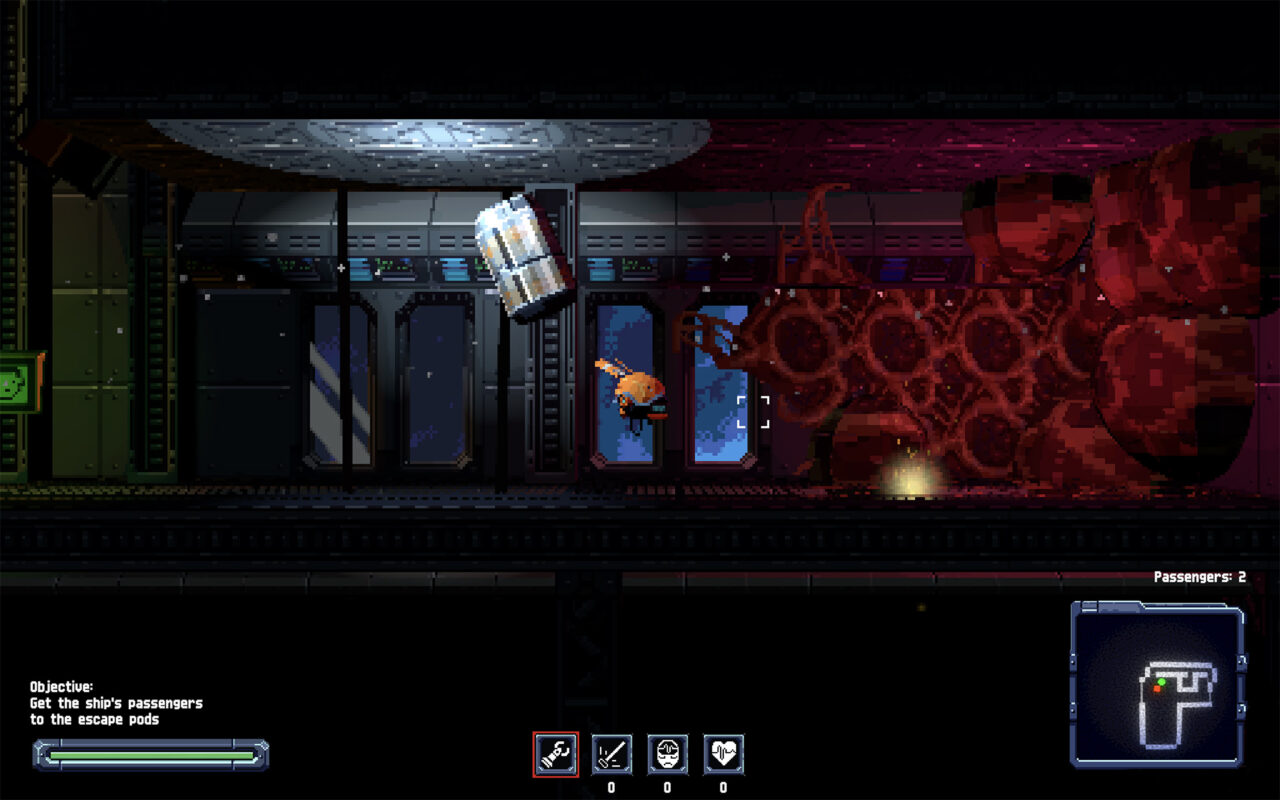
Wanky Musings:
I’m of the mindset that, if at first you don’t succeed, do something else. There’s no shame in a dev deciding against the removal of a mechanic because it doesn’t feel right. Indeed, knowing what needs removing from a project is even more important than simply adding. But at the same time, a lot of these problems can be solved. If a game can take a notoriously unlikeable mechanic such as an escort mission, turn the entirely annoying virtual babysitting into something that’s actually fun and cool, then anything can be.
Vital Signs is a demo at the moment, but you can play it for free on itch.io by clicking here.
Categorized:Editorials Ultra-Indie Spotlight

